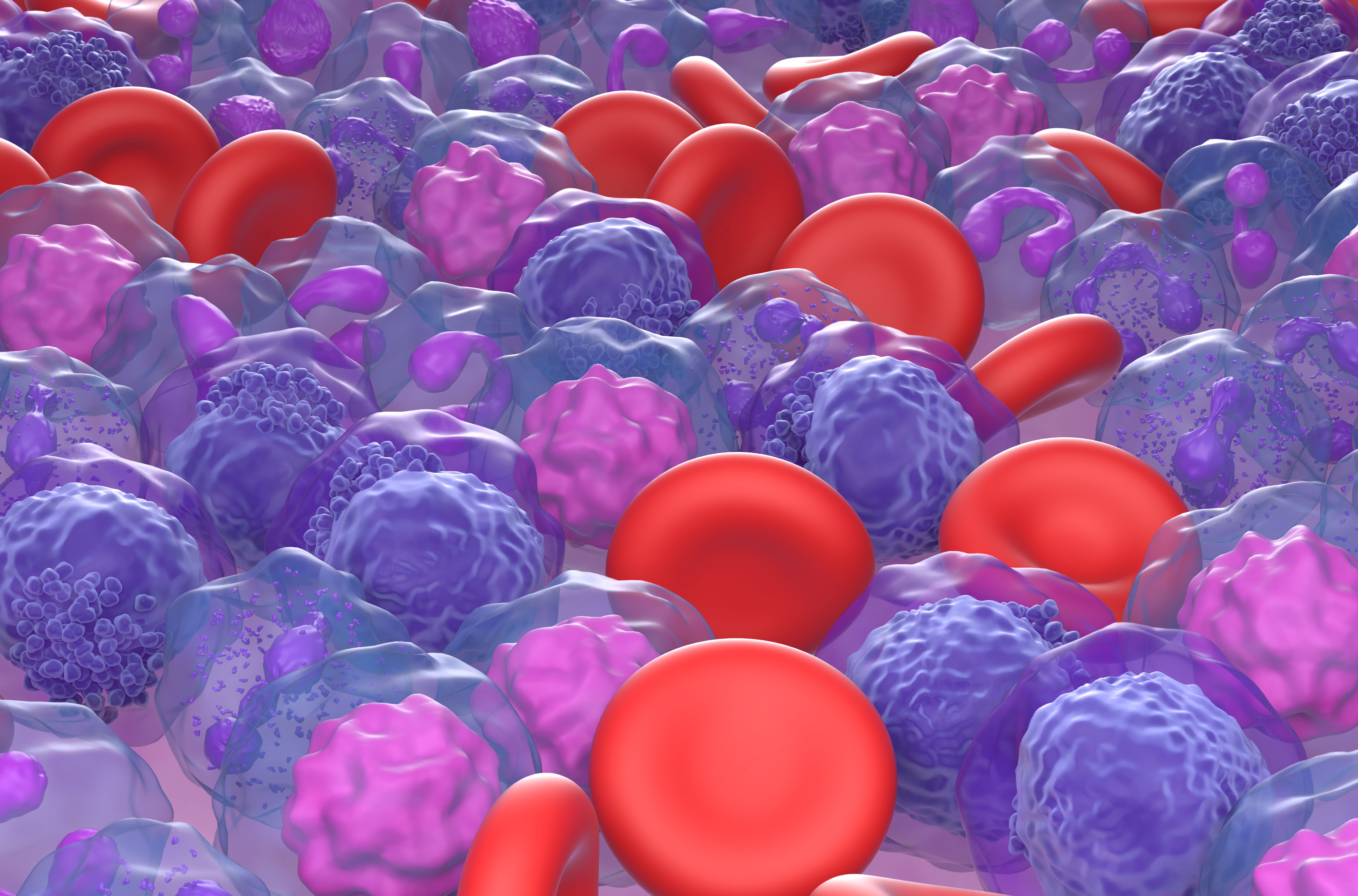- Center on Health Equity & Access
- Clinical
- Health Care Cost
- Health Care Delivery
- Insurance
- Policy
- Technology
- Value-Based Care
Studies Examine Real-World Pediatric AML Treatment and Outcomes
Two posters presented at the 2024 American Society of Hematology meeting reported real-world outcomes data for patients treated for pediatric acute myeloid leukemia (AML).
At the 2024 American Society of Hematology (ASH) Annual Meeting & Exposition, research on real-world treatment and outcomes for patients with pediatric acute myeloid leukemia (AML) added to the understanding of clinical trial outcomes. Highlights included posters exploring the role of allogeneic hematopoietic cell transplantation (allo-HSCT) in treating pediatric AML, along with updates from APAL2020SC (NCT04726241), an ongoing Leukemia and Lymphoma Society-sponsored screening trial and registry for patients with relapsed or refractory acute leukemias.
A retrospective analysis using data from the AML-BFM trials conducted in 2004 and 2012 and the AML-BFM 2012 registry, spanning 2004 to 2019, provides a detailed analysis of the effects of allo-HSCT. The study includes 381 pediatric patients diagnosed with various AML subtypes, excluding those with Down syndrome, acute promyeloblastic leukemia, and treatment-related AML.
The median age at the time of transplantation was 8.9 years, with donor sources including matched sibling donors (27%), matched unrelated donors (60%), haploidentical donors (12%), and other mismatched donors (1%). The remission status at the time of transplantation was categorized as first complete remission (CR1, 44%), second or greater complete remission (≥ CR2, 36%), or refractory diseases (NR) with or without leukemic blasts (14% and 6%, respectively) after the second course of induction. The study reported a median follow-up of 7.7 years.
Studies presented at ASH 2024 added to the understanding of real-world treatment and outcomes for patients with pediatric AML. | Image credit: LASZLO - stock.adobe.com

The study's results demonstrate significant improvements in overall survival (OS) and disease-free survival (DFS) estimates over time, with 4-year OS and DFS probabilities of 71.5% and 62.9%, respectively. The study highlights those patients transplanted in CR1 showed markedly better outcomes, with OS and DFS rates of 84.2% and 73.4%, compared to those in ≥ CR2 (73.4% and 65.4%) or NR without (54.2% and 50.0%) or with (35.9% and 30.7%) leukemic blasts.
Additionally, the study found comparable survival rates for matched siblings and unrelated donors, demonstrating superior outcomes compared with haploidentical donors. Specifically, OS and DFS rates were 79.4% and 73.9% for matched sibling donors, 69.8% and 62.4% for matched unrelated donors, and 60.7% and 41.2% for haploidentical donors.
The study concludes that improved risk stratification, pre-transplant strategies, and advances in transplantation have steadily increased survival rates, particularly for patients transplanted in CR1, where survival now approaches 85%. The study authors note, "This data emphasizes the inclusion of children and adolescents with AML into clinical trials to further enhance treatment responses through novel promising drugs and expand indications for allo-HSCT in CR1."
An additional poster highlighted data from the APAL2020SC Pediatric Acute Leukemia (PedAL) Screening Trial, which collects "valuable real-world treatment and response data, as well as comprehensive molecular characterization," for children with relapsed and refractory AML who are not enrolled in clinical trials. This study aims to address knowledge gaps surrounding relapsed (rAML) and primary refractory (prAML) AML in children, with the goal of guiding future therapeutic trials.
Data from 124 patients, comprising 79 with rAML and 45 with prAML, were used in the study to examine the molecular features, re-induction treatments, and response data of patients with rAML and prAML. Central next-generation sequencing (NGS) revealed that 87% of rAML and 74% of prAML patients had identifiable fusions or copy number alterations. A notable finding was the higher prevalence of KMT2A fusions in patients with rAML, observed in 36.5% compared to 17% in prAML patients. It was also found that RAS pathway mutations were prevalent, with some mutations disappearing at relapse while others persisted or emerged anew.
Treatment outcomes were also evaluated, as one of the primary objectives of APAL2020SC is to gather treatment and outcome data for patients not participating in clinical trials. The study reports that, among 40 patients with rAML, 21 (52.5%) achieved complete remission after the first re-induction cycle, with fludarabine/cytarabine-based combinations being the most commonly used regimen. In patients with prAML, 10 of 23 (43.5%) patients achieved remission after cycle 1, using FLA (n = 2), venetoclax (n = 5), or CPX-351 (n = 3) regimens.
The authors noted, "These data will fill gaps in knowledge regarding this patient population and will inform the design of future therapeutic trials."
References
- Rettinger E, HutterM, Karschen B, et al. Allogeneic hematopoietic stem cell transplantation in pediatric acute myeloid leukemia: results of the AML BFM study group. Presented at: 66th ASH Annual Meeting & Exposition; December 7-10, 2024; San Diego, CA. Abstract 3548.
- Redell M, Gerbing R, Alonzo T, et al. Molecular features, treatments and outcomes for pediatric AML patients from APAL2020SC pediatric acute leukemia (PedAL) screening trial. Presented at: 66th ASH Annual Meeting & Exposition; December 7-10, 2024; San Diego, CA. Abstract 4233.
